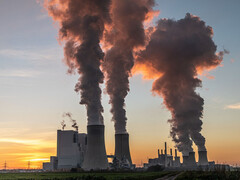Apart from the fact that CO2 drives the greenhouse effect, it is quite toxic in higher concentrations and chemically extremely stable. After all, it remains at the end of an important chemical process: in a fire, whether in a fireplace, a power plant or on a barbecue.
So it cannot simply be broken down again afterward. The energy required for this is in the range that was previously released by the combustion process. This is therefore completely inefficient.
Storage is also difficult. The CO2 would have to be captured as soon as it is produced. In addition, it is difficult to bind a gas in one place, let alone store it for a long time.
Instead, it has to be forced to react somehow, with as little energy input as possible. Chemists use catalysts that change reaction times or the necessary reaction energies.
Researchers at MIT have been able to extremely optimize the entire process that initially turns CO2 into carbon monoxide with the help of a new type of electrode. This means that renewable energy sources could actually be worthwhile. According to their paper, it should be sufficiently energy-efficient and, thanks to its uncomplicated design, can be easily implemented on a larger scale.
Although it doesn't sound like it at first: an electrode made of carbon fibers is equipped with threads of DNA strands. The catalyst is located at the end of these strands. In this specific case, it is porphyrins, chemical dyes.
These DNA threads are said to be inexpensive to produce. They can be perfectly adapted to the respective requirements and act like Velcro. In this way, carbon dioxide, usually dissolved in water, can be converted into carbon monoxide in a very small space in contact with the catalyst.
This turns the less reactive CO2 into a chemical raw material that is easy to process. This is because carbon monoxide can be used to produce methanol and ethanol, for example. Both substances are required in large quantities for chemical processes. And if need be, they can be used to run combustion engines, heat or generate electricity.












